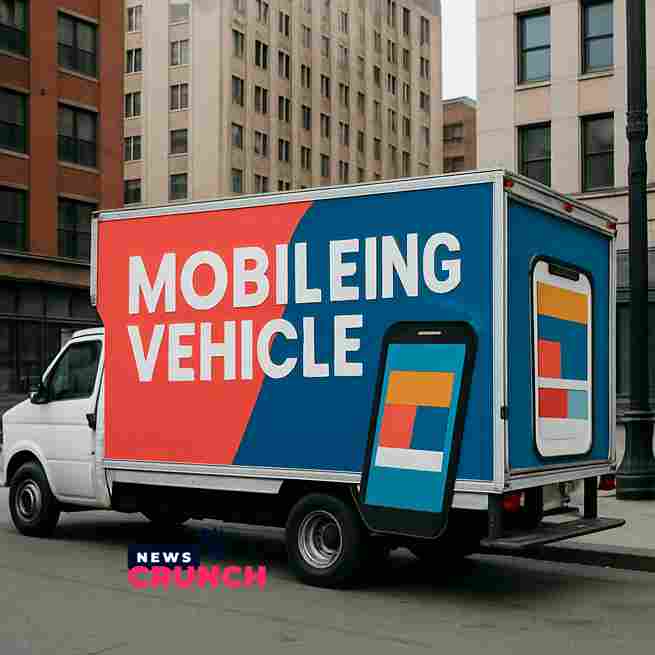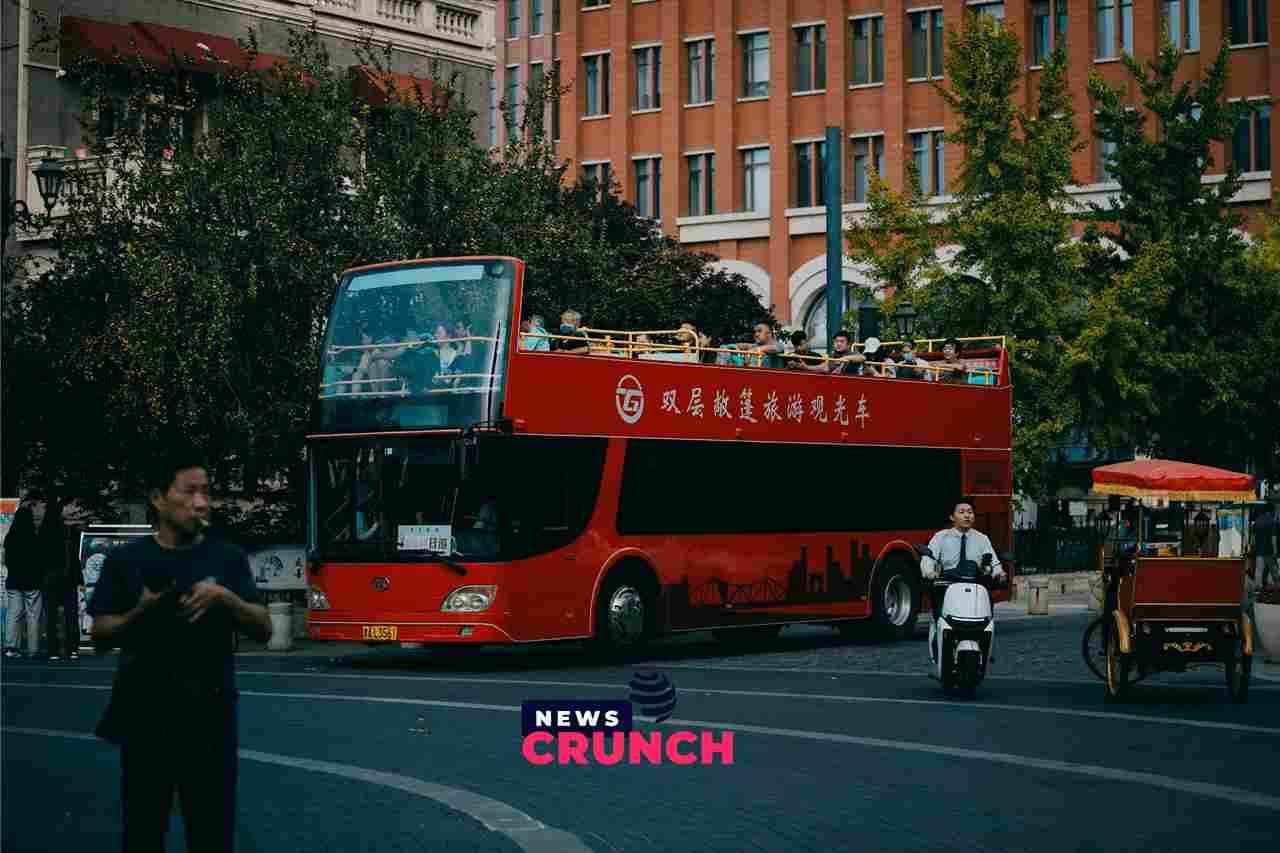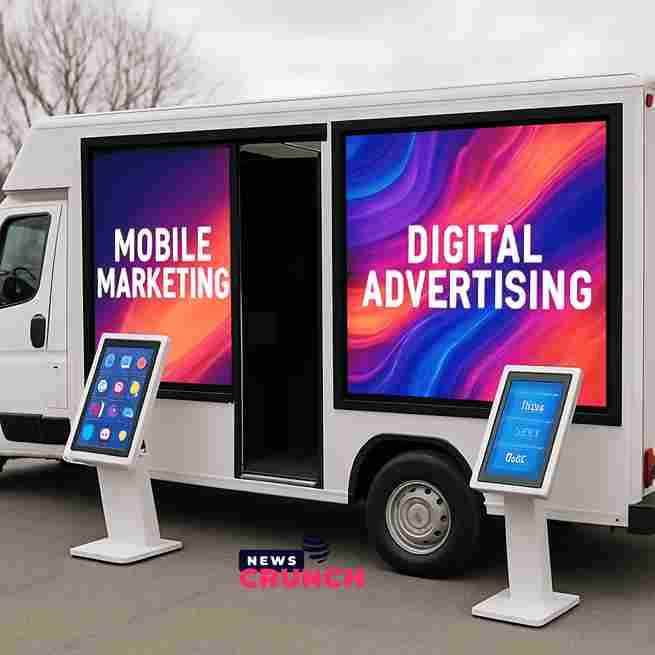Mobile marketing vehicles are transforming the way brands connect with audiences. These vehicles are not just transportation; they are dynamic marketing tools. They offer a unique and engaging way to connect directly with consumers. Imagine a car equipped with digital screens and interactive displays. It captures attention and creates memorable brand experiences. This is the power of mobile marketing vehicles.
In tours, these vehicles bring brands to life. They allow companies to reach diverse audiences across multiple cities. This maximizes brand exposure and engagement. In the world of MMA promotions, mobile marketing vehicles build hype. They showcase fighters and engage fans with interactive content. This creates excitement and anticipation for upcoming events. The trend of using mobile marketing vehicles is growing. Brands are seeking more personalized and interactive consumer experiences. These vehicles offer flexibility and creativity in campaign execution.
Mobile marketing vehicles are cost-effective compared to traditional advertising. They provide a tangible and memorable brand experience. This leads to increased brand awareness and customer loyalty. As marketing trends evolve, mobile marketing vehicles are at the forefront. They offer innovative solutions for brands to stand out in crowded markets. The future of marketing is on the move.
What Are Mobile Marketing Vehicles?
Mobile marketing vehicles are specially designed and equipped cars used for promotional activities. These vehicles serve as mobile billboards or event spaces, offering versatile marketing solutions. They engage audiences with visually striking designs and interactive elements.
Customization is key for mobile marketing vehicles. Brands can tailor them with digital screens, sound systems, and interactive kiosks. This creates immersive experiences that captivate audiences. The vehicles can transform any location into a vibrant marketing space.
The design of these vehicles is essential for catching the eye. From vibrant graphics to cutting-edge technology, every feature plays a role. They turn city streets into dynamic stages for brand storytelling. Their mobility allows reaching consumers where they are, breaking through advertising clutter.
Standard features of mobile marketing vehicles include:
- Digital displays for visual content
- Interactive zones for engaging experiences
- Branded exteriors that draw attention
- Custom interiors designed for events and promotions
These vehicles are evolving with technology, integrating AI and VR for deeper engagement. Whether for tours, product launches, or experiential events, mobile marketing vehicles deliver a unique presence. They bridge the gap between brands and consumers, offering a direct and personal connection.
The Rise of Mobile Marketing Vehicles in Modern Campaigns
The marketing landscape constantly evolves, and mobile marketing vehicles are increasingly at the forefront of modern campaigns. These vehicles capture attention unlike static billboards. They deliver messages directly to the audience. They adapt to various locations and events by being on the move, creating a flexible marketing approach.

A notable shift is the growing popularity of experiential marketing. Audiences crave unique and memorable experiences. Mobile marketing vehicles deliver this by interacting directly with consumers. They provide a tangible connection to brands, essential in today’s digital-heavy world.
Several factors contribute to this rise:
- Increasing demand for immersive brand experiences
- Advances in vehicle technology, allowing for innovative designs
- The need for targeted and versatile marketing strategies
- Rising competition among brands to stand out
Brands are recognizing the value of these assets. They see how mobile marketing vehicles can boost campaign effectiveness. Marketers will likely invest more in mobile marketing solutions as consumer preferences evolve. By integrating these vehicles, brands align with modern trends, ensuring they remain relevant and engaging.
Types of Mobile Marketing Vehicles and Their Features
Mobile marketing vehicles come in various shapes and sizes, each with unique features tailored to specific campaigns. They are designed to attract attention and engage audiences in different settings.
Food trucks are a popular choice. They serve delicious treats while promoting a brand, offering a sensory experience. These vehicles often feature interactive elements, like branded games or social media integrations.
Another type is the pop-up shop on wheels. These vehicles transform into mini retail stores, allowing brands to showcase their products directly to consumers. They provide a convenient shopping experience wherever they park.
Tour buses are also prevalent in mobile marketing tours. They offer large spaces for branding and can accommodate numerous guests. These buses are ideal for traveling campaigns, reaching a broad audience in multiple locations.
The diversity in mobile marketing vehicles is reflected in their features:
- Digital screens for dynamic content
- Interactive displays for consumer engagement
- Custom graphics and wraps for brand visibility
Event trailers offer yet another option. These are versatile and can expand to create larger spaces, suitable for hosting events. Brands use them for product demos and large gatherings.

Choosing the right vehicle type depends on campaign goals and the target audience. By understanding their unique characteristics, marketers can leverage mobile marketing solutions to boost brand presence.
Mobile Marketing Tours: Taking Brands on the Road
Mobile marketing tours allow brands to reach audiences across multiple locations. They create memorable experiences by bringing the brand directly to consumers in diverse settings.
These tours are all about engagement. They offer hands-on experiences that captivate and draw audiences to the brand. They can be especially effective in generating buzz and excitement around new launches or initiatives.
A key component of a successful tour is planning. Brands must carefully select locations where their target audience is likely to be. They should also consider timing and local events that can enhance participation.

by Ziko Liu (https://unsplash.com/@ziko_l)
Mobile marketing tours leverage several strategies to amplify their impact:
- Product Sampling: Provides firsthand consumer interaction with products.
- Live Demos: Demonstrate product features and benefits in real-time.
- Interactive Displays: Engage consumers with interactive content and activities.
- Social Media Integration: Encourage visitors to share their experiences online.
The adaptability of these tours makes them a powerful marketing tool. Brands can shift focus as needed, optimizing their strategy based on audience feedback. This flexibility ensures that mobile marketing tours remain relevant and impactful in an ever-evolving marketing landscape. The road is open for brands willing to innovate and engage directly with consumers.
Mobile Marketing in MMA Promotions: Engaging Fans and Building Hype
Mobile marketing vehicles have become indispensable in MMA promotions. They offer a dynamic way to connect with fans and build event excitement.
These vehicles can showcase fighters and promote upcoming matches through eye-catching, branded exteriors. By featuring interactive content and digital displays, they immerse fans in the MMA experience even before they enter the arena.
One of the standout features is their ability to create localized hype. By strategically parking, mobile marketing vehicles can draw fans, distribute promotional materials, and generate a festive atmosphere.
A successful MMA promotion using mobile marketing vehicles might include:
- Meet-and-Greets: Allow fans to meet fighters and get autographs.
- Merchandising: Sell branded merchandise directly to fans.
- Live Broadcasts: Stream fight highlights and exclusive content.
- Interactive Zones: Create fan challenges and interactive games.
These activities not only engage fans but also amplify the promotion’s reach. Social media integration can extend the event’s influence, with fans sharing their experiences online. By fostering a strong community vibe, mobile marketing vehicles help elevate the excitement surrounding MMA events. Embracing this vibrant method ensures that promotions stay fresh and resonate deeply with audiences.
Key Benefits of Mobile Marketing Vehicles
Mobile marketing vehicles offer a unique edge in the crowded advertising landscape. Their ability to capture attention on the move makes them invaluable for innovative campaigns.
One of the primary benefits is their versatility. These vehicles can be tailored to meet specific campaign objectives, offering a bespoke marketing solution. Whether it’s a product launch or an awareness campaign, mobile marketing vehicles can adapt to various themes and targets.

Engaging with consumers face-to-face is another significant advantage. Mobile marketing vehicles allow for direct interaction, fostering personal connections. This can increase brand loyalty and customer engagement, setting the stage for long-term relationships.
Cost-effectiveness cannot be overlooked. Mobile marketing vehicles offer more bang for the buck than traditional advertising avenues. They provide:
- High visibility: Reach diverse audiences on the move.
- Creative execution: Stand out with innovative designs.
- Measurable impact: Track success with analytics.
By integrating these vehicles into marketing strategies, brands can achieve a dynamic presence in the market. Their ability to create lasting impressions underscores their importance in modern advertising. The potential for creativity is vast, and the results are impactful.
Mobile Marketing Solutions: Customization and Technology Integration
Customization is at the heart of effective mobile marketing solutions. Each vehicle can be designed to reflect a brand’s unique identity and message. This customization allows brands to ensure cohesive branding across all campaign touchpoints.
Technology integration further elevates the impact of mobile marketing vehicles. By incorporating cutting-edge tech, these vehicles become promotional tools and interactive experiences. Some examples are digital screens, virtual reality setups, and interactive displays.

The fusion of customization and technology opens up a world of possibilities for marketers. These solutions enable brands to create memorable, engaging experiences that resonate with audiences. This adaptability is a key driver for brands looking to make a lasting impact.
Consider these elements when planning a tech-driven mobile marketing strategy:
- Interactive displays: Engage consumers with dynamic content.
- Augmented reality: Immerse audiences in your brand story.
- Data integration: Use metrics for real-time campaign adjustments.
Ultimately, tailored aesthetics and technological advancements make mobile marketing vehicles a powerful tool. Their flexibility and innovative potential guarantee a compelling brand presence on the move.
Read Also: Apple Watch and AI Meeting Notes
Mobile Marketing Trends: What’s Shaping the Future?
The landscape of mobile marketing is constantly evolving. In recent years, several key trends have emerged. These trends are shaping the future of mobile marketing vehicles, offering new avenues for innovation and engagement.
Personalization is leading the charge. Consumers crave experiences tailored to their preferences, pushing brands to develop more individualized campaigns. This personalization extends to mobile marketing vehicles, allowing them to deliver unique interactions.

Sustainability is also becoming a core trend. As brands focus on eco-friendly practices, mobile marketing campaigns are seeing a shift toward sustainable solutions. Vehicles using alternative energy sources and biodegradable materials are gaining popularity.
The integration of social media and real-world marketing efforts is another growing trend. Mobile marketing vehicles now often complement digital campaigns, offering a seamless brand experience. This integration helps bridge the gap between online engagement and in-person interaction.
Prominent trends include:
- Personalized experiences: Tailored content for better audience connection.
- Sustainability measures: Eco-friendly practices in campaign design.
- Seamless integration: Combining digital and physical marketing efforts.
These trends highlight a future that values engagement, personalization, and responsibility. Mobile marketing vehicles are poised to ride these waves into exciting new possibilities.
Measuring Success: Data, Analytics, and ROI
Understanding the impact of mobile marketing vehicles requires robust data and analytics. By leveraging technology, brands can track a range of performance metrics. This allows for informed decision-making and strategic adjustments.
Return on Investment (ROI) is a critical consideration. Data collection allows companies to identify what works and where improvements are needed. This helps enhance overall campaign effectiveness, providing a clear view of the benefits.
Key metrics to monitor include:
- Engagement rates: Interactions and consumer interest.
- Geolocation data: Areas with the highest impact.
- Conversion rates: Turning engagement into actual sales.
Regular analysis of these metrics enables real-time adaptations. By reviewing this data, marketing teams can ensure their mobile marketing vehicles achieve desired outcomes. In an ever-evolving landscape, staying informed on performance is key to sustained success.
How to Launch a Successful Mobile Marketing Vehicle Campaign
Starting a mobile marketing vehicle campaign requires careful planning and creativity. First, define clear objectives. Know what you want to achieve, whether brand awareness or new customer acquisition.
Selecting the right vehicle is crucial. Consider factors such as size, features, and customization options. The car should reflect your brand’s personality and campaign goals.
Once the vehicle is chosen, plan your route. This involves identifying target locations that match your audience. Busy urban centers, popular events, and local gatherings can offer high visibility.
Ensure your campaign is engaging and interactive. Incorporate digital displays or live demonstrations to captivate your audience. Use social media to boost online engagement and gather feedback.
Steps to launch a campaign:
- Set objectives: What are your specific goals?
- Choose a vehicle: Decide on features and customization.
- Plan the route: Target locations where your audience is present.
- Design interactions: Engage your audience with memorable experiences.

A successful campaign requires ongoing monitoring. Be ready to adapt based on feedback and analytics. This flexibility can lead to even greater success and impact.
Conclusion: The Road Ahead for Mobile Marketing Vehicles
Mobile marketing vehicles are a vibrant and dynamic tool in the modern marketer’s toolkit. Their flexibility and engaging nature make them ideal for diverse promotional campaigns.
These vehicles will play an even bigger role as mobile marketing trends evolve. Adapting to new technologies and creative solutions will be key. Brands willing to innovate and embrace this mobile marketing solution will undoubtedly lead the charge. The future looks bright for mobile marketing vehicles, paving the way for impactful, memorable campaigns.
FAQs About Mobile Marketing Vehicles
1. What are mobile marketing vehicles?
Mobile marketing vehicles are customized trucks, vans, or buses used to promote brands directly to people. They create engaging, on-the-go experiences that connect with audiences in real time.
2. How do mobile marketing tours help brands?
Mobile marketing tours allow companies to take their message across cities. They build visibility, reach diverse audiences, and generate strong brand awareness.
3. Why are mobile marketing vehicles effective in MMA promotions?
In MMA, mobile marketing vehicles generate excitement by reaching fans before significant events. They help promote fights, sell merchandise, and boost overall fan engagement.
4. What industries can benefit from mobile marketing tours?
Many industries use mobile marketing tours, from sports and entertainment to tech and retail. They offer a flexible way to showcase products and connect with customers.
5. How do brands measure ROI from mobile marketing vehicles?
Brands track ROI through foot traffic, social media engagement, lead generation, and direct sales. These vehicles turn real-world interactions into measurable results.
6. Are mobile marketing vehicles customizable?
Mobile marketing vehicles can be fully customized with branding, digital screens, and interactive setups. This makes each tour or campaign unique and impactful.






